Neuropsychological Deficits Chronically Developed after Focal Ischemic Stroke and Beneficial Effects of Pharmacological Hypothermia in the Mouse
- PMID: 32010477
- PMCID: PMC6961763
- DOI: 10.14336/AD.2019.0507
Neuropsychological Deficits Chronically Developed after Focal Ischemic Stroke and Beneficial Effects of Pharmacological Hypothermia in the Mouse
Abstract
Stroke is a leading cause of human death and disability, with around 30% of stroke patients develop neuropsychological/neuropsychiatric symptoms, such as post-stroke depression (PSD). Basic and translational research on post-stroke psychological disorders is limited. In a focal ischemic stroke mouse model with selective damage to the sensorimotor cortex, sensorimotor deficits develop soon after stroke and spontaneous recovery is observed in 2-4 weeks. We identified that mice subjected to a focal ischemic insult gradually developed depression/anxiety like behaviors 4 to 8 weeks after stroke. Psychological/psychiatric disorders were revealed in multiple behavioral examinations, including the forced swim, tail suspension, sucrose preference, and open field tests. Altered neuronal plasticity such as suppressed long-term potentiation (LTP), reduced BDNF and oxytocin signaling, and disturbed dopamine synthesis/uptake were detected in the prefrontal cortex (PFC) during the chronic phase after stroke. Pharmacological hypothermia induced by the neurotensin receptor 1 (NTR1) agonist HPI-363 was applied as an acute treatment after stroke. A six-hr hypothermia treatment applied 45 min after stroke prevented depression and anxiety like behaviors examined at 6 weeks after stroke, as well as restored BDNF expression and oxytocin signaling. Additionally, hypothermia induced by physical cooling also showed an anti-depression and anti-anxiety effect. The data suggested a delayed beneficial effect of acute hypothermia treatment on chronically developed post-stroke neuropsychological disorders, associated with regulation of synaptic plasticity, neurotrophic factors, dopaminergic activity, and oxytocin signaling in the PFC.
Keywords: BDNF; oxytocin; pharmacological hypothermia; post-stroke depression (PSD); stroke.
Copyright: © 2019 Zhong et al.
Conflict of interest statement
Conflict of interest The authors declare no conflicts of interest.
Figures
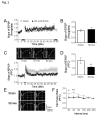
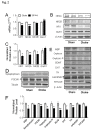
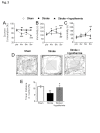
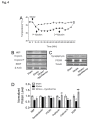
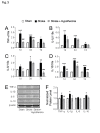
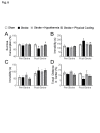
Similar articles
-
Neuronal protein-tyrosine phosphatase 1B hinders sensory-motor functional recovery and causes affective disorders in two different focal ischemic stroke models.Neural Regen Res. 2021 Jan;16(1):129-136. doi: 10.4103/1673-5374.286970. Neural Regen Res. 2021. PMID: 32788467 Free PMC article.
-
Persistent post-stroke depression in mice following unilateral medial prefrontal cortical stroke.Transl Psychiatry. 2016 Aug 2;6(8):e863. doi: 10.1038/tp.2016.124. Transl Psychiatry. 2016. PMID: 27483381 Free PMC article.
-
Effect of aerobic exercise on BDNF/proBDNF expression in the ischemic hippocampus and depression recovery of rats after stroke.Behav Brain Res. 2019 Apr 19;362:323-331. doi: 10.1016/j.bbr.2018.11.037. Epub 2018 Nov 27. Behav Brain Res. 2019. PMID: 30500428
-
Hypothermia for acute ischemic stroke: not just another neuroprotectant.Neurologist. 2003 Nov;9(6):280-9. doi: 10.1097/01.nrl.0000094628.29312.2b. Neurologist. 2003. PMID: 14629782 Review.
-
Selection of preclinical models to evaluate intranasal brain cooling for acute ischemic stroke.Brain Circ. 2019 Dec 27;5(4):160-168. doi: 10.4103/bc.bc_20_19. eCollection 2019 Oct-Dec. Brain Circ. 2019. PMID: 31950091 Free PMC article. Review.
Cited by
-
Potential Biochemical Mechanisms of Brain Injury in Diabetes Mellitus.Aging Dis. 2020 Jul 23;11(4):978-987. doi: 10.14336/AD.2019.0910. eCollection 2020 Jul. Aging Dis. 2020. PMID: 32765958 Free PMC article. Review.
-
The development of the neurocritical care specialty in China based on the analysis of neurocritical care unit volume and quality.Brain Circ. 2024 Mar 21;10(1):67-76. doi: 10.4103/bc.bc_71_23. eCollection 2024 Jan-Mar. Brain Circ. 2024. PMID: 38655441 Free PMC article.
-
Conversion of Reactive Astrocytes to Induced Neurons Enhances Neuronal Repair and Functional Recovery After Ischemic Stroke.Front Aging Neurosci. 2021 Mar 26;13:612856. doi: 10.3389/fnagi.2021.612856. eCollection 2021. Front Aging Neurosci. 2021. PMID: 33841125 Free PMC article.
-
D-Serine produces antidepressant-like effects in mice through suppression of BDNF signaling pathway and regulation of synaptic adaptations in the nucleus accumbens.Mol Med. 2021 Oct 15;27(1):127. doi: 10.1186/s10020-021-00389-x. Mol Med. 2021. PMID: 34654365 Free PMC article.
-
Oxytocin Receptor Signaling in Vascular Function and Stroke.Front Neurosci. 2020 Sep 25;14:574499. doi: 10.3389/fnins.2020.574499. eCollection 2020. Front Neurosci. 2020. PMID: 33071746 Free PMC article. Review.
References
-
- Ayerbe L, Ayis S, Wolfe CD, Rudd AG (2013). Natural history, predictors and outcomes of depression after stroke: systematic review and meta-analysis. Br J Psychiatry, 202: 14-21 - PubMed
-
- Kronenberg G, Balkaya M, Prinz V, Gertz K, Ji S, Kirste I, et al. (2012). Exofocal dopaminergic degeneration as antidepressant target in mouse model of poststroke depression. Biol Psychiatry, 72: 273-281 - PubMed
LinkOut - more resources
Full Text Sources
Other Literature Sources
Miscellaneous
